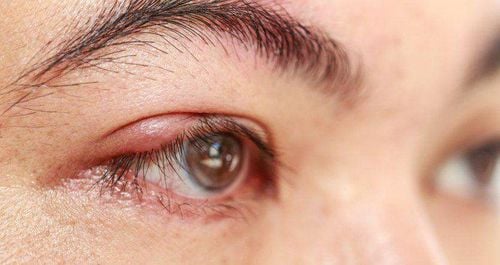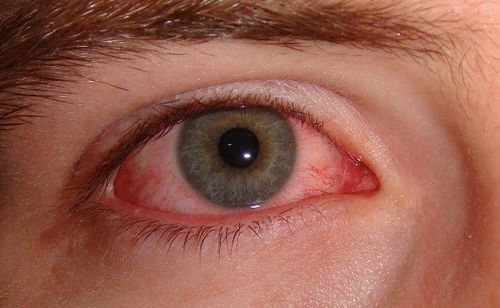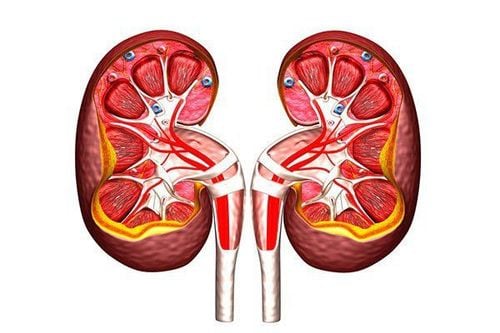1. Systemic lupus erythematosus
Systemic lupus erythematosus is a chronic autoimmune disease that commonly affects areas such as the skin, joints, blood vessels, heart, kidneys, and nervous system. It can also affect the eyes. Normally, the immune system protects the body by fighting off external invaders like bacteria and viruses. However, in lupus patients, the immune system behaves abnormally, attacking the body’s healthy tissues.
2. Effects of lupus erythematosus on the eyes
Lupus patients often experience severe disease flare-ups, followed by remission periods. During flares, inflammation and swelling occur throughout the body, causing fatigue, pain, and tissue damage. The eyes are not exempt from this damage.

2.1. Dry eye disease
Dry eye is a common condition in people with autoimmune diseases like lupus. Patients with lupus may develop dry eye symptoms, which is also known as dry eye syndrome.
Dry eye syndrome is a condition where symptoms of dry eyes become severe, which often cause discomfort for the patients, such as a gritty sensation in the eyes, itching, and burning. The amount of tears is also significantly reduced, affecting the external parts of the eye such as the cornea and conjunctiva.
If dry eye occurs alongside arthritis and dry mouth, it is classified as Sjögren’s syndrome. This syndrome is more common in individuals with autoimmune conditions, including lupus, and affects approximately 20% of lupus patients. Dry eyes result from tear glands failing to produce enough tears to nourish and lubricate the eyes.
This condition can lead to damage to the anterior surface of the eyes and impair vision. Dry eyes caused by lupus are often difficult to distinguish from other causes of dry eye.
2.2. Eyelid disease
The eyelids can also become irritated in individuals with autoimmune diseases. Lupus patients may develop uncomfortable skin conditions that manifest as thick, scaly rashes on the eyelids. Occasionally, patients may experience burning and itching. Scarring from these lesions can lead to deformities along the edge of the eyelids.

These rashes, called discoid lesions, consist of small, scaly, disc-shaped wounds. They predominantly appear in areas exposed to sunlight. Smoking may also play a role in the development of this condition.
About 10% of lupus patients experience this issue. These lesions typically respond well to oral steroid treatment.
2.3. Retinal disease
Retinal vasculitis is a complication of systemic lupus erythematosus in which blood supply to the retina is reduced or restricted. The retina attempts to repair itself by developing new blood vessels, a process known as neovascularization. Unfortunately, these new blood vessels are fragile and weak. Blood and fluid tend to leak from these vessels, causing swelling in the retina.
When retinal vasculitis affects the macula, the patient’s central vision may diminish or be lost. Retinal vasculitis can also impact the optic nerve and eye muscles.
Doctors may observe "cotton-wool spots" in the retina of affected patients. These are small, white areas of retinal swelling caused by insufficient blood and oxygen supply to the region.
2.4. Scleritis
Systemic lupus erythematosus can cause scleritis, an inflammation of the sclera—the tough, white outer layer of the eyeball. Scleritis leads to inflammation and pain in the sclera.
Due to the inflammation, the sclera may become thinner, creating a weak area of the eye that could rupture or sustain serious damage if an eye injury occurs in the future.

For most patients, scleritis mainly causes pain, light sensitivity, blurred vision, and redness or dark patches on the sclera.
Scleritis can be treated with steroids, topical medications, or non-steroidal anti-inflammatory drugs (NSAIDs). It’s crucial to see an ophthalmologist immediately upon noticing unusual eye symptoms.
2.5. Optic neuropathy
Although uncommon, some patients with lupus erythematosus experience optic neuritis. This is an inflammation of the covering around the optic nerve. Optic neuritis usually affects only one eye, but profound vision loss can occur. Optic neuritis associated with lupus often causes optic nerve atrophy.
Optic neuropathy can also occur when blood vessels supplying the optic nerve are obstructed, resulting in an eye condition similar to a stroke. This is a serious condition requiring prompt treatment; otherwise, the eye may suffer severe damage.
Optic neuropathy due to lupus affects roughly half of lupus patients. Vision loss may progress slowly or, in some cases, deteriorate more rapidly.
Cranial nerve palsy can lead to double vision, poor eye movement and coordination, sluggish pupil reflexes, and drooping eyelids.
Damage to the optic nerve fibers in the brain can cause hallucinations, loss of peripheral vision, and/or central vision impairment.

Eye conditions in lupus patients may be directly caused by the disease itself or result from side effects of medications used in treatment. Notably, hydroxychloroquine (Plaquenil) can cause retinal toxicity over time, especially when used in high doses.
Doctors recommend that lupus patients undergo comprehensive annual eye exams. Patients taking hydroxychloroquine should have a baseline eye examination before starting the medication and follow up with regular annual eye checks.
To arrange an appointment, please call HOTLINE or make your reservation directly HERE. You may also download the MyVinmec app to schedule appointments faster and manage your reservations more conveniently.








